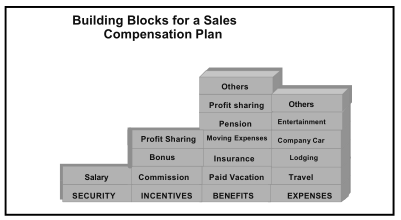Because compensation levels for sales personnel are related to external supply and-demand factors, it is important to consider prevailing compensation patterns in the community and industry. Management needs answers to four questions:
- What compensation systems are being used?
- What is the average compensation for similar positions?
- How are other companies doing with their plans? And
- What are the pros and cons of departing from industry or community patterns?
If there is a companywide formal job evaluation program, it should take into account the current rates for sales positions in the community and industry. A program for setting compensation of sales personnel is sound only if it considers the relation of external compensation practices to those of the company. Effective sales executives maintain constant vigilance against the possibility that the pay of sales personnel will get out of line with that paid for similar jobs in the community or industry.
Determine Compensation Level
Management must determine the amount of compensation a salesperson should receive on the average. Although the compensation level might be set through individual bargaining, or on an arbitrary judgment basis, neither expedient is recommended. Management should ascertain whether the caliber of the present sales force measures up to what the company would like to have. If it is too low, or if the company should have lower-grade people than those currently employed, management should determine the market value of sales personnel of the desired grade. Management weighs the worth of individual persons through estimating the sales and profit dollars that would be lost if particular salespeople resigned.. Another consideration is the compensation amount the company can afford to pay. The result of examining these and other factors pertinent to the situation is a series of estimates for the total cost of salespeople’s compensation.
In some firms, companywide formal job evaluation programs are used to set compensation levels for sales positions. The procedure recommended earlier serves as a check on the compensation levels prescribed through job evaluations. Any discrepancies should be reconciled. When the job evaluation program is sound, there should be few, if any, discrepancies.
It is not unusual to find that two companies operate under similar selling conditions but with different sales compensation levels. Sales personnel in one company earn more than those who do essentially the same work in another company. Relatively speaking, the first group of salespeople is overcompensated. What explains such situations?
- Sometimes, management does not know the true worth of individual sales personnel.
- In other cases, management regards some sales personnel as indispensable.
- In still other cases, sales managers are biased in favor of high compensation for selling jobs.
Provide for the Various Compensation Elements
A sales compensation plan has as many as four basic elements:
- A fixed element, either a salary or a drawing account, to provide some stability of income;
- A variable element (for example, a commission, bonus, or profit-sharing arrangement), to serve as an incentive;
- An element covering the fringe or “plus factor,” such as paid vacations, sickness and accident benefits, life insurance, pensions, and the like; and
- An element providing for reimbursement of expenses or payment of expense allowances. Not every company includes’ all four elements. Management selects the combination of elements that best fits the selling situation. The proportions that different elements bear to each other vary. However, most companies split the fixed and variable elements on a 60:40 to an 80:20 basis’.


